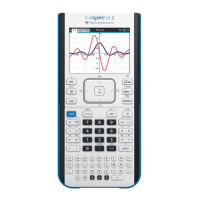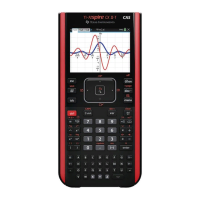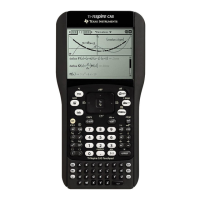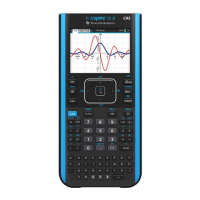224 Using Lists & Spreadsheet
This distribution is used to determine the probability of the occurrence of
a certain value in a normal distribution. The draw option is available
when Normal PDF is invoked from a formula cell.
When you access distributions from the formula cell, you must select a
valid list from the pull-down to avoid unexpected results. If accessed
from a formula cell, you must specify a number for the x-value. The
distribution returns the probability that the value you specify will occur.
Normal Cdf (normCdf)
Normal Cdf computes the cumulative density function of a probability
distribution between lowerbound and upperbound for the specified mean,
m, and standard deviation, s. The defaults are m=0 and s=1.
This distribution is useful in determining the probability of an occurrence
of any value between the lower and upper bounds in the normal
distribution. It is equivalent to finding the area under the specified
normal curve between the bounds.
Inverse Normal (invNorm)
Inverse Normal computes the inverse cumulative normal distribution
function for a given
area under the normal distribution curve specified by
mean, m, and standard deviation, s.
This distribution is useful in determining the x-value of data in the area
from 0 to x<1 when the percentile is known.
t Pdf() (tPdf())
t Pdf computes the probability density function (pdf) for the
t-distribution at a specified x value. df (degrees of freedom) must be > 0.
The probability density function (pdf) is:
This distribution is useful in determining the probability of the
occurrence of a value when the population standard deviation is not
known and the sample size is small. The draw option is available when t
Pdf is invoked from a formula cell.
fx()
1
2πσ
--------------
e
x μ–()
2
2σ
2
-------------------–
–
σ 0>,=
x()
Γ df 1+()/2[]
Γ df 2⁄()
---------------------------------=
1 x
2
/df+()
df 1+()/2–
πdf
----------------------------------------------

